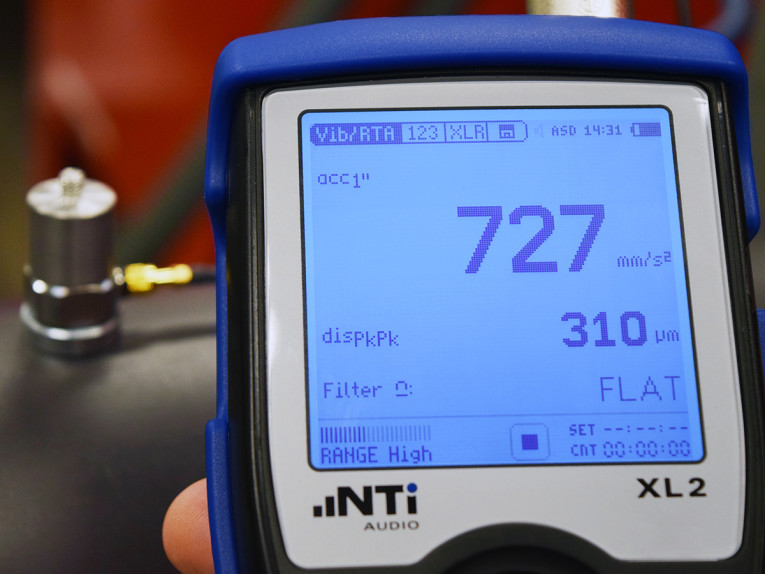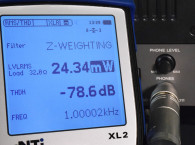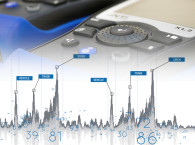
The new NTi Audio Vibration Meter is a multi-functional device designed for machine vibration measurement (cyclic condition monitoring and troubleshooting), production line quality control, as well as structural vibration assessment. As soon as users connect a vibration sensor via the ASD adapter, the vibration analysis mode is activated and the Vibration Meter will measure acceleration accurately for frequencies down to 0.7 Hz, as well as velocity and displacement. Various filters and time weightings provide a gliding RMS level for ease of displaying and reading peak values, making the Vibration Meter suitable for many applications.
A spectrum is provided, with octave and 1/3rd resolution in a range of 0.8 Hz to 2.5 kHz. Spectrums can be stored on the device for comparison with later measurements. The real-time FFT spectrum is useful for identifying the source and measuring vibration values. Analysis ranges from 1 Hz to 1.7 kHz. Results are logged in plain text format for easy import into Wordpad, MS Excel or similar. In addition, the vibration signal can be saved as a compressed WAV file.

Various filters as well as time weightings, including gliding RMS values for smooth readings, Peak and Peak-Peak readings are available, supporting a broad range of applications. A CPB spectrum with 1/1 or 1/3 octave resolution is calculated simultaneously, covering a frequency range from 0.8 Hz to 2.5 kHz. An automatic cursor points to the dominating frequency. Spectra can be compared using a “capture” which holds a previous result while, at the same time, showing the spectrum of the current input signal.
The data logger supports recording of vibration measurements and CPB results in plain text format for easy import e.g. into MS Excel. The vibration signal can also be stored, along with measured data, as a compressed or linear wave file. All data is stored on the device's SD card, along with voice notes if required. The SD card provides sufficient space for long-term vibration assessments.
The Vibration Meter is well suited for integration into a production line for quality control. It quickly detects unwanted vibrations by comparing them against the spectrum of a “good” result and automatically making the pass/fail decision.
Adding the Vibration Option to any existing XL2 Sound Level Meter gives users the ability to switch between Vibration and Sound Level Meter mode.
More technical data available here.
https://www.nti-audio.com/en/products/vibration-meter






